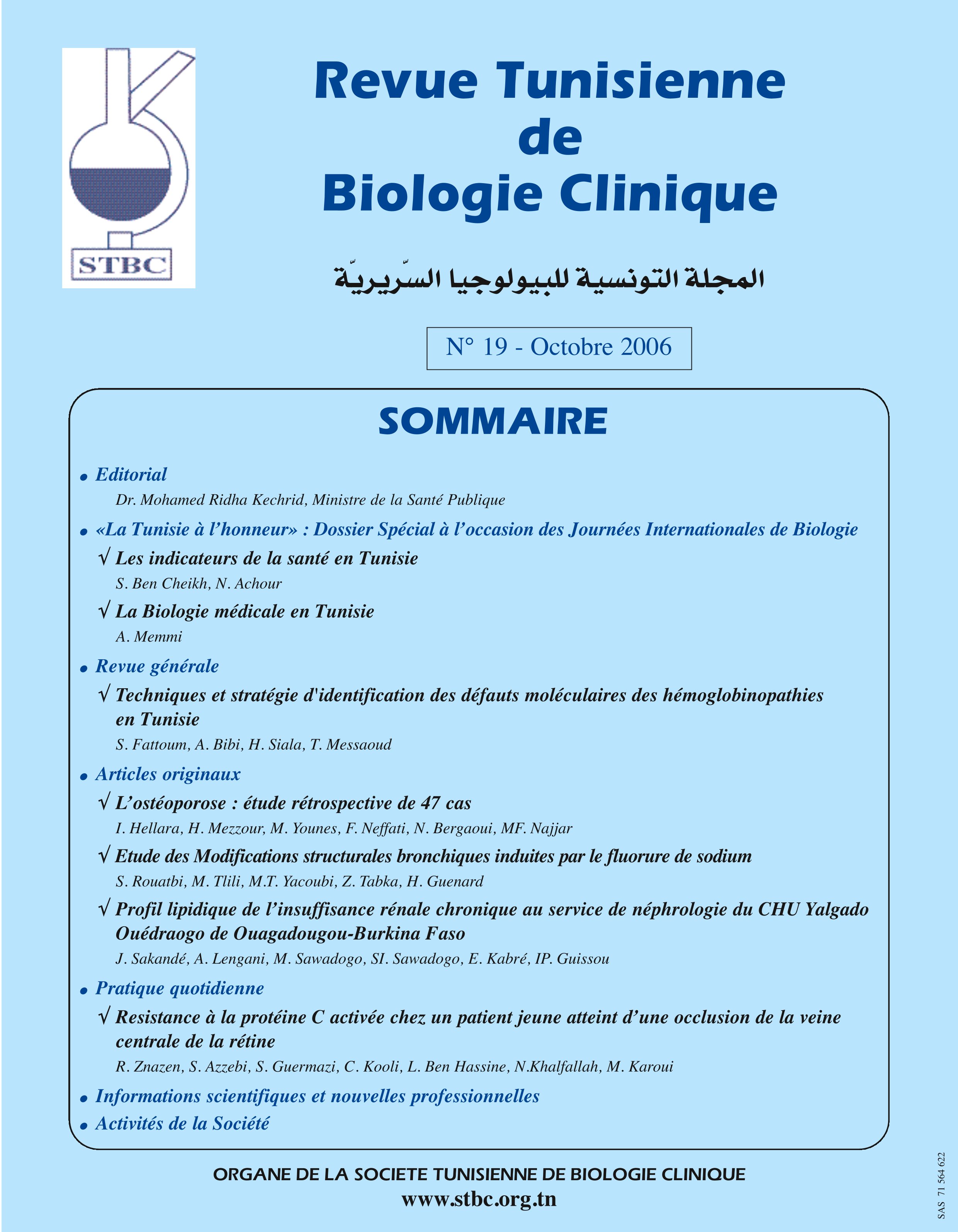Résumé
L’occlusion de la veine centrale de la rétine (OVCR) est l'une des pathologies vasculaires les plus communes de l'œil, habituellement rencontrée chez le sujet âgé. Sa pathogenèse est multifactorielle faisant intervenir des facteurs locaux (glaucome) et systémiques (hypertension artérielle, diabète, athérosclérose, dyslipidémies…). De même, les états thrombophiliques acquis et / ou héréditaires (hyperhomocystéinemie, anticorps antiphospholipides, résistance à la protéine C activée (RPCA ), déficit en protéines C, S et antithrombine,…) constituent des facteurs de risque prédisposant à la maladie, en particulier chez le sujet jeune. Nous rapportons le cas d'un patient âgé de 43 ans hospitalisé à l'Hôpital Charles Nicolle pour OVCR compliquée d’un glaucome néo-vasculaire et cécité au niveau de l’œil droit. Le bilan étiologique a révélé la présence d'une hypertriglyceridémie associée à un marqueur thrombophilique : la RPCA. Le Facteur V Leiden n'a pas été recherché. Selon les données de la littérature, la RPCA semble être, pour certains auteurs, un risque thrombophilique favorisant la survenue de l'OVCR. Il parait alors nécessaire d’évaluer devant une OVCR, à côté des facteurs de risque systémiques, les marqueurs thrombophiliques, en particulier chez le sujet jeune.

Ce travail est disponible sous la licence Creative Commons Attribution 4.0 International .
(c) Tous droits réservés R. ZNAZEN, S. AZZEBI, S. GUERMAZI, C. KOOLI, L. BEN HASSINE, N. KHALFALLAH, M. KAROUI 2003

